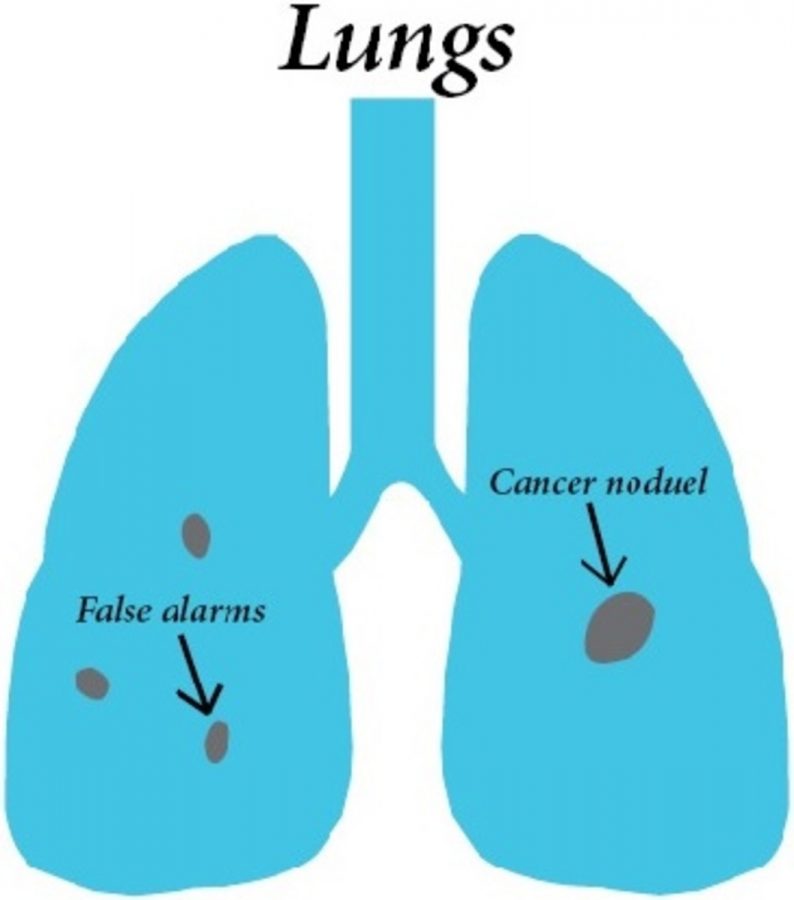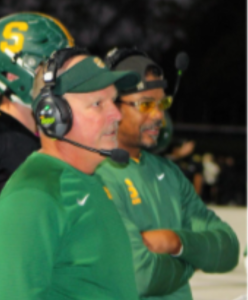Cancer screenings create serious risks
Harmful or helpful?
(Photo courtesy: Benjamin B-R) Spiral CT screenings can find cancer nodules as small as a grain of rice, but it is hard to tell if they will be harmful or not. Scans show more than just cancer, it is difficult to distinguish between what is cancerous and what is not. To find out can lead to damaging processes that might do more damage than help.
May 14, 2015
Every year, approximately 170,000 people are diagnosed with lung cancer, with an estimated 160,000 people die from lung cancer.
This cancer kills more people than breast, prostate, and colon cancers combined.
Cancer is something that has been researched for years, trying to find new ways to stop and prevent it.
Recently a type of scanning for lung cancer has become controversial in its results. Medicare in February announced to insure this scan annually for those ages 55-77 who have smoked an equivalent pack a day for 30 years.
This test is called a spiral CT scan, it is where the recipient lies on a table and moves continuously through a tunnel like hole as an x-ray tube rotates around the recipient.
This spiral path x-ray is used to create a three-dimensional picture of the lungs and other structures in the chest.
When asked if she would want a grandparent to take this scan, freshmen Sierra Smith said “Yeah, so many people have died in my family because of lung and other cancers. I would definitely want them to take it just in case.”
Spiral CT scans have shown in test groups to decrease mortality rate by 20% because of the scans ability to find the beginnings of cancerous tumors. This scanning does use radiation, but not nearly as much as older CT scans.
This is a breakthrough in cancer science and screening to saving thousands of lives that would have been lost. There are though, major drawbacks, doctors hesitate to move on positive readings in practice for lung cancer.
Spiral CT scans can find cancerous growths at the size of a grain of rice, but it cannot detect if this would actually be harmful.
The scan cannot discriminate between anomalies found and cancer tumors, which can result in dangerous unneeded procedures like a biopsy that can cause a collapsed lung. This also causes panic in people, they might ask for immediate procedures instead of waiting to be sure of validity.
“If somebody hears they have a 5 percent chance that this is cancer, and then you say, ‘Well, let’s wait three months and repeat your CAT (CT) scan,’ if the emotional response is, ‘No, let’s do something now,” then we’re going to do a lot of harm in the process of doing a little good,” task force vice chairman Michael LeFevre
It is not that spiral scans are ‘bad science’, it is just that the doctors and radiologists who performed the tests were highly skilled and careful, the fear is that doctors in realistic environments will not always be as careful or experienced.
Out of a thousand patients, data showed that only 3.3 averted death over five years with annual spiral CT scanning, While 233 patients persistently experience false positives.
“I’d support it (spiral CT) if patients wouldn’t be able to get a biopsy or something potentially dangerous without more testing,” junior Jay Sihma said.







